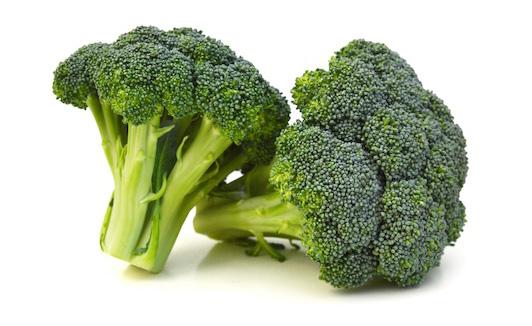ZoneWellness
Become a priority in your life


Become a priority in your life


“Your body is a temple.” It’s a phrase most of us have heard before, often in a health and wellness context. But beyond diet and exercise, what does it truly mean to treat your body like a temple? The answer lies in caring for the inner foundations that support every aspect of your life. External wellness can only thrive when the internal pillars are strong.
Here are six core areas of internal wellness to focus on:
1. Mental Wellness
Your thoughts and emotions shape how you engage with the world. Prioritizing mental health through stress management, therapy, mindfulness, or simple daily reflection ensures resilience and balance in challenging times.
2. Intellectual Wellness
Challenging your brain with learning, creativity, and curiosity keeps you engaged and adaptable. Whether through reading, problem-solving, or new skills, intellectual growth supports both career and personal satisfaction.
3. Emotional Wellness
Being aware of and managing your feelings creates healthier relationships and greater self-acceptance. Emotional wellness encourages empathy, reduces conflict, and provides the stability needed for other areas of wellness to flourish.
4. Physical Wellness
Movement, nutrition, and rest are the most visible signs of self-care, but they are also deeply tied to internal health. Physical wellness provides the energy
and strength needed to sustain your goals in every other domain.
5. Occupational Wellness
A meaningful career or daily work contributes to identity and purpose. True occupational wellness, however, depends on a strong foundation of mental, emotional, and intellectual health. Without them, satisfaction at work can be difficult to achieve.
6. Spiritual Wellness
Regardless of belief system, finding connection to values, purpose, or something larger than yourself provides perspective and inner peace. This dimension guides decisions and fosters resilience when facing uncertainty.
The Inner Foundation Comes First
Financial stability, professional success, and even physical health are difficult to sustain without tending to the inner pillars. Mental clarity supports smarter financial decisions. Emotional stability fosters stronger work performance. Intellectual curiosity fuels growth across all domains.
Maintaining balance in these six internal areas creates a foundation that supports every external goal. Your body, your mind, and your inner world are indeed a temple—how you care for them determines the strength and stability of everything you build on top.
• What’s with pickleball?
• Three facts about your bones
• Stress and your stomach
• Ways to stop that bloated feeling
• Emotions and overeating
• How to retrain hunger cues
• Avoid motivational content burnout
• Why do I feel cold all the time
• Mentall wellness tips
• Ways to build emotional resilience
• Energy Zone - Broccoli


Pickleball, once a niche pastime, has exploded into one of Canada’s fastestgrowing sports. With more than 1.5 million Canadians now playing regularly, the game has become a staple in community centres, parks, and even professional leagues.
Pickleball is a paddle sport that combines elements of tennis, badminton, and pingpong. Played on a smaller court with a perforated plastic ball and solid paddles, it’s accessible to all ages and skill levels. The rules are simple, and players can pick it up quickly; making it ideal for casual fun or competitive play.
According to Pickleball Canada, the sport’s appeal lies in its social nature, low barrier to entry, and health benefits. It’s fun, inclusive, and increasingly competitive. A 2023 survey showed a surge in younger players and a 170% increase in women playing for competition. The sport’s growth has even led to the formation of professional teams

Publisher: Stefan Dreesen
Editor: Kate Van Hoof-Peeren
H&S Communication Specialists: Alan Haycroft, Liz Slobodin, Kevin Harvey
like Toronto United, part of the Canadian National Pickleball League.
Any form of regular exercise is vital for physical and mental well-being. Pickleball offers:
• Cardiovascular benefits through moderate aerobic activity.
• Improved coordination and balance
• Low-impact movement, making it jointfriendly.
• Social interaction, which supports mental health and community connection.
As noted by Canadian physiotherapists, the sport is attracting people of all ages— from youth to seniors—because it’s both engaging and adaptable.
Whether you’re looking to stay active, meet new people, or compete, this sport offers a unique blend of fitness and fun.
As Canada continues to embrace pickleball, it’s clear that this paddlepowered pastime is here to stay.
TOLL FREE: 1-888-655-4800
Mailing Address: 2010 Winston Park Drive, Suite 200, Oakville, ON L6H 5R7 www.smartworkplace.ca | info@smartworkplace.ca
The information presented in Wellness Zone has been compiled from sources believed to be reliable. However, it cannot be assumed that all acceptable measures are contained in this article nor that additional measures may not be required under particular or exceptional circumstances, or your own company procedures, or by federal, state/ provincial and local law.
Application of this information to a specific worksite should be reviewed by a wellness professional. Anyone making use of the information set forth herein does so at his/her own risk and assumes any and all liability arising therefrom. Specific medical advice should be obtained through consultation with a physician or other trained health care practitioner. Wellness Zone is published monthly by Smart Workplace Inc. www.smartworkplace.ca. All rights reserved. © 2025. No part of this publication is to be copied without permission from the publisher.
(NC) November is Osteoporosis Month—a disease that makes bones so weak and brittle that an impact or fall can fracture or break them. It’s an opportunity to spread awareness and learn how to keep your bones healthy. Get started with some facts about your bones you might not have known:
Bones are living tissue. They may not be as flexible or sensitive as skin and muscle, but your bones are very much alive. They’re constantly shedding older tissue and building new tissue to replace it. Like the rest of your body, your bones’ needs change as you age: starting in your 30s, the pace of tissue replacement slows, while the shedding of older bone tissue continues. This leads to bone loss as you age, and if your bones aren’t supported, it can lead to osteoporosis.
Bones need more than calcium. One important way to keep bones healthy is to feed them. A varied diet with foods full of essentials such as calcium, Vitamin D, protein, phosphorous and magnesium is a known way to promote bone health.
Bones need workouts, too. Exercise is essential for keeping your muscles and heart healthy, and it’s just as important for your bones. Exercising applies force to your bones which stresses them. They respond to that stress by producing more new tissue and becoming denser.
Weightbearing exercises are some of the best for promoting bone health—things that have you on your feet and putting stress on your bones, such as:
• Jogging or running.
• Sports like soccer, tennis, basketball and pickleball.
• Climbing stairs.
• Hiking.
Bones need attention and maintenance to stay healthy, delay bone loss and prevent osteoporosis. Maintaining physical activity and a diet of bone-healthy foods are both essential to keeping them strong for years to come.

Do you often feel bloated after every meal, no matter what you eat? That lingering digestive discomfort can be frustrating, especially when you’re trying to live health-consciously. Persistent bloating is often a sign your gut health needs attention, but relief is possible. When you’re feeling bloated after meals, it’s easy to assume the problem lies only in what you’re eating. But often, the way you eat plays just as important a role.
• Eating too quickly or not chewing thoroughly puts unnecessary stress on your digestive system. Large chunks of food are harder to break down, which can directly lead to postmeal bloating. Rapid eating also increases air swallowing, known as aerophagia, which contributes to that uncomfortable fullness.
Simple adjustments can make a real difference:
• Try chewing each bite 20-30 times, or until the texture is completely smooth.
• Put your fork down between bites to slow the pace and aim to spend 20-30 minutes on each meal.
• Eliminating distractions like scrolling on your phone or working while eating helps you practice mindful eating, which supports the release of digestive enzymes needed for smoother digestion.
By slowing down, you allow your body to process food more efficiently - often reducing bloating immediately.
• Not all bloating comes from how you eatsometimes, it’s about what your body struggles to process. Certain foods are common culprits, and sensitivities vary from person to person. Gluten, dairy, processed sugars, and artificial sweeteners are frequent triggers that may cause inflammation and lead to digestive discomfort.
One of the most effective ways to uncover your personal triggers is through a short elimination approach. Remove suspected foods for two to three weeks, then reintroduce them one at a time while keeping a food and symptom journal. This simple process helps you pinpoint which foods cause bloating after meals and which ones your gut handles well.s
Remember, this isn’t necessarily about cutting out foods forever. Instead, it’s about learning how your body responds so you can make informed choices. By identifying and reducing food sensitivities, you create the conditions for better digestive health and naturally reduce
bloating without unnecessary restrictions.
• Your body naturally produces digestive enzymes to break down proteins, fats, and carbohydrates into absorbable nutrients. When enzyme levels are low, food lingers in your digestive tract longer than it should, leading to bloating and discomfort after meals. Supporting your natural enzyme production is one of the most effective gut healing strategies you can practice.
You can boost digestive enzymes through targeted food choices such as:
• Enzyme-rich fruits: pineapple, mango, kiwi, and avocado.
• Bitter foods: kale, dandelion greens, and ginger.
• Fermented foods: sauerkraut, kimchi, and miso.
Include one or two of these foods with each meal. Also, avoid eating within three hours of bedtime - giving your digestive system adequate time to process food reduces overnight bloating and supports intestinal health.
Restore the Beneficial Bacteria Your Gut Needs
A healthy gut microbiome is essential for smooth digestion and overall gut health. When the balance of bacteria in your intestines is disrupted, bloating and digestive discomfort often follow. Rebuilding your gut microbiome is one of the most powerful ways to reduce bloating after meals and support long-term intestinal health.
The most effective approach combines probiotic-rich foods with prebiotics that nourish beneficial bacteria. While supplements have their place, food-based sources offer superior benefits for those seeking natural digestive solutions.
• Probiotic foods: plain yogurt with live cultures, kefir, kombucha, tempeh, and traditional sauerkraut.
• Prebiotic foods: garlic, onions, leeks, asparagus, slightly green bananas, and oats.
• Fiber diversity: eat a wide range of plant foods to maximize bacterial variety.
Aim to include both probiotics and prebiotics daily. Be patient--meaningful improvements in gut bacteria typically take 2-4 weeks of consistent effort. Over time, this rebuilds a resilient microbiome that naturally improves digestion and keeps bloating at bay.
Stress and anxiety have a profound impact on gut health, largely due to the intricate communication system known as the gut-brain axis. This two-way connection means that emotional distress can directly influence digestive function— and vice versa.
When you’re stressed or anxious, your body activates the fight-flight-freeze response, diverting energy away from digestion to prioritize survival. This can lead to symptoms such as nausea, vomiting, diarrhea, abdominal pain, and the familiar sensation of “butterflies in the stomach.”

According to the Canadian Digestive Health Foundation, the brain often struggles to distinguish between physical and emotional threats, meaning even non-dangerous stressors can trigger digestive issues.
Over time, this can lead to visceral hypersensitivity, where the gut becomes more sensitive to pain and discomfort.
Supporting your parasympathetic nervous system - your “rest and digest” state - is essential for lasting gut healing.
Simple daily practices can naturally calm your nervous system and improve digestion:
• Before meals: Take 5-10 deep breaths to activate digestive function.
• After eating: Walk gently for 10-15 minutes to support gut motility.
• Sleep quality: Prioritize 7-9 hours nightly for optimal gut repair.
• Stress reduction: Practice meditation, journaling, or gentle yoga regularly.
When you lower stress, you create the ideal environment for digestive health. Over time, this creates lasting relief by addressing the root causes of bloating, not just masking symptoms.

If you’re someone who prepares healthy meals on Sundays but still ends up reaching for unhealthy snacks by Wednesday night, you’re not failing - it’s your strategy that’s letting you down.
Food cravings aren’t about weakness or lack of discipline; they’re a natural response to stress, emotions, and your body’s chemistry.
Try these strategies:
Prep your kitchen. Chances are the way your kitchen is set up is quietly working against you. Chocolate bars left on the counter or ice cream sitting at eye level in the freezer can spark cravings before you even think to resist them.
Move tempting foods out of sight or make them less convenient to grab. For example, store sweets or other treat foods in a cupboard you rarely open, or keep them in a closed container instead of out on display. These small barriers make it easier to pause and make different choices.
Place ready-to-eat fruit or cut vegetables near the front of the fridge so they’re the first thing you see. Put a bowl of nuts on the counter instead of less healthy snacks.
Think about your blood sugar. When your blood sugar rises sharply after eating refined carbs or sugary snacks, it eventually crashes - leaving you tired, irritable, and far more likely to reach for quick comfort foods. These dips can create cravings that feel stronger than regular hunger.
The solution is to keep blood sugar steady, so your brain isn’t hijacked by sudden drops. Building meals around protein and fibre helps smooth out
the highs and lows. Simple pairings like apple slices with nut butter, Greek yogurt with berries, or hummus with vegetables keep energy levels consistent while curbing cravings.
Hormones and late-night cravings. Think back to the last time you stayed up too late and found yourself raiding the kitchen. That pull toward snacks isn’t just habit - it’s hormones at work. Poor sleep disrupts the balance of leptin and ghrelin - the hormones that help control hunger. When you’re short on rest, your body produces more ghrelin, which stimulates hunger, and less leptin, which signals fullness. The result is stronger cravings and increased hunger, particularly for sugary or fatty comfort foods.
Simple shifts like setting a regular bedtime, limiting screens before bed, and keeping your bedroom cool and dark can help reset your hormones. With better rest, you’ll find it easier to manage food cravings and feel more in control of your choices.
Rewire your stress response. For many people, food becomes the go-to relief during stressful moments. That’s not a lack of willpower - it’s how your body reacts to cortisol, the main stress hormone. The key is to manage stress before it builds into cravings. Even small daily habits can make a difference. Taking a few deep breaths, stepping outside for a quick walk, or writing down what’s on your mind can calm your nervous system enough to reduce food urges. Over time, these small shifts help build new pathways in your brain, so you can stop food cravings and overcome emotional eating without relying on sheer willpower.
Sometimes feeling hungry isn’t a physical response. It can also come from an emotional place triggered by stress, boredom, or other feelings. In those moments, food becomes comfort or distraction rather than nourishment, according to healthlinkbc.ca. While it’s normal to occasionally seek comfort in food, frequent emotional eating can lead to overeating, especially when high-calorie, sugary, or fatty foods are involved.
Health and Wellness Canada explains that stress activates a cortisol-dopamine cycle that fuels comfort eating. Cortisol heightens cravings for high-calorie foods, while dopamine creates a sense of reward when you eat them. Together, they override your body’s fullness cues, making it difficult to stop even when you’re already full.
Physical hunger builds gradually and is accompanied by bodily cues like a growling stomach or low energy. It can be satisfied with a variety of foods and stops once you’re full. In contrast, emotional hunger comes on suddenly, is tied to specific emotions, and often involves cravings for comfort foods. It may persist even after eating and is frequently followed by guilt or shame. Here are a few tips to avoid emotional eating:
1. Pause and reflect – Before eating, ask yourself if you’re truly hungry or responding to an emotion.
2. Keep a food and mood journal –Track what you eat and how you feel to identify emotional triggers.
3. Use a hunger scale – Rate your hunger from 1 (starving) to 10 (overfull) to better understand your body’s needs.
4. Find alternative coping strategies –Try deep breathing, journaling, walking, or calling a friend instead of reaching for food.
5. Practice mindful eating – Focus on the taste, texture, and experience of eating to stay present and avoid impulsive choices.

Our world is saturated with inspirational quotes, productivity hacks, and the “rise and grind” culture. Motivational content is everywhere. While it can be uplifting, too much of it can lead to a lesser-known phenomenon: motivational content burnout.
Toxic positivity saturates most motivational content. Every setback becomes a “blessing in disguise.” Every struggle is “happening for a reason.” This relentless optimism invalidates genuine difficulties. Sometimes life just hurts. Pretending otherwise creates emotional whiplash.
Motivational content burnout occurs when individuals feel mentally exhausted or emotionally numb from constant exposure to motivational messages. Instead of feeling inspired, they begin to feel overwhelmed, inadequate, or even cynical. This burnout is not just about work—it’s about the pressure to constantly improve, hustle, and stay positive.
Motivational burnout can stem from:
• Overconsumption of motivational media without time to reflect or apply it.
• Unrealistic expectations set by influencers or productivity gurus.
• Comparison fatigue, where viewers feel they’re falling short of others’ success.
• Lack of balance between motivation and rest or self-compassion.
According to the Canadian Centre for Occupational Health and Safety (CCOHS), burnout is often marked by emotional exhaustion, cynicism, and a sense of ineffectiveness. These symptoms can be triggered not only by work but also by constant pressure to self-optimize.
As a result, motivational burnout can lead to reduced productivity, loss of joy or purpose, mental fatigue and disconnection from personal goals. It’s a signal that your brain needs less stimulation and more integration—time to process, reflect, and rest.
Here are some strategies, inspired by Canadian resources like the Human Resources Professionals Association of Canada, to help you stay inspired without burning out:
1. Set boundaries with content - Limit your daily exposure to motivational media. Choose quality over quantity— follow creators who promote balance and authenticity.
2. Practice mindful consumption - Before applying advice, ask: Does this align with my values and current needs? Not every tip is meant for everyone.
3. Balance motivation with rest - As the HRPA notes, celebrating rest as performance fuel is essential. Leaders and individuals alike should model healthy boundaries and prioritize recovery. Those empty moments you fill with inspirational scrolling? Leave them empty. Let your mind wander. Ideas emerge from space, not stimulation. Creativity needs room to breathe. Constant input prevents processing what you’ve already absorbed.
4. Reflect before you act - Instead of jumping into a new habit or challenge, take time to reflect. Journaling or quiet walks can help integrate ideas meaningfully.
5. Focus on progress, not perfectionMotivation should support your journey— not pressure you to be flawless. Celebrate small wins and be kind to yourself.
6. Unfollow toxic positivity - If a creator makes you feel inadequate or constantly pressured, it’s okay to unfollow. Choose voices that uplift without overwhelming. Your motivational content burnout signals wisdom, not weakness. Your psyche recognizes the difference between genuine fuel and junk food inspiration. Trust that instinct. Stop scrolling for answers that already exist inside you. The motivation you seek isn’t in someone else’s morning routine or success story.
Feeling cold occasionally is normal— especially in Canada’s brisk climate. But for some, the chill never seems to go away. Constant coldness can be a benign personal trait or a sign of something more serious.
Some people naturally have a lower tolerance for cold due to body composition, age, or gender. Women, for example, tend to feel colder than men because of a lower resting metabolic rate, which means their bodies produce less heat at rest, according to mcgill. ca. People with low body fat or those who are sedentary may also feel cold more often, simply because their bodies aren’t generating enough internal warmth.
In these cases, feeling cold is not dangerous. It’s a matter of personal physiology and can often be managed by dressing warmly, staying active, and eating well.
However, persistent coldness can be a symptom of underlying health conditions. Cold intolerance may be linked to:
• Hypothyroidism: A sluggish thyroid slows metabolism, reducing heat production.
• Anemia: Low iron or vitamin B12 levels impair oxygen delivery, making you feel cold.
• Poor circulation: Conditions like Raynaud’s phenomenon or diabetes can restrict blood flow to extremities.
• Vitamin deficiencies: Low levels of vitamin D or B12 can affect immune and metabolic function.
• Sleep deprivation: Lack of rest can disrupt body temperature regulation.
If you’re frequently cold even in warm environments, or if it’s accompanied by fatigue, weight changes, or numbness, it’s important to consult a healthcare provider.
Regardless of the cause, regular physical activity is one of the best ways to combat feeling cold. Exercise boosts circulation, increases muscle mass, and raises your metabolic rate—all of which help your body generate and retain heat.
Health Canada emphasizes that staying active, especially during winter, is essential for maintaining overall health and adjusting to cold conditions. Activities like walking, skating, or even indoor workouts can help your body adapt and stay warm
Feeling cold all the time isn’t always a cause for concern—but it shouldn’t be ignored either. Understanding your body’s signals and staying active can help you stay warm and well. If the chill persists, a medical check-up may uncover a treatable condition behind the frost.
Emotional resilience is the ability to adapt to stress, adversity, and change while maintaining mental well-being. Resilient individuals don’t avoid hardship—they learn to navigate it with strength, flexibility, and purpose.
According to the Centre for Addiction and Mental Health (CAMH), resilience is not a fixed trait but a skill that can be developed over time. It involves “bouncing back” from difficult life experiences and using strategies to cope and adapt as best as possible
Here are a few strategies to strengthen your emotional resilience:
1. Build strong relationships. Healthy social connections are a cornerstone of resilience. Surround yourself with supportive friends, family, or community groups. Helping others can also boost your own sense of purpose and strength.
2. Reframe challenges. Try to view setbacks as temporary and manageable. CAMH suggests
interpreting events in ways that reduce distress—such as identifying lessons learned or focusing on what’s within your control.
3. Accept what you can’t change. Acceptance doesn’t mean giving up— it means redirecting energy toward areas you can influence. This shift can reduce feelings of helplessness and increase confidence.
4. Maintain a hopeful outlook. Visualize positive outcomes and focus on your strengths. Optimism helps you stay motivated and solution-focused, even during tough times.
Emotional resilience is not about being unaffected by stress—it’s about learning to thrive despite it. By practicing these strategies, you can build a stronger foundation for mental wellness and face life’s challenges with greater confidence. For more resources, visit CAMH’s guide to building resilience.
Mental wellness isn’t just the absence of mental illness—it’s about feeling balanced, capable, and connected.
Whether you’re managing stress, navigating change, or simply trying to feel more grounded, these tips can help:
1. Practice mindfulness. Mindfulness means being present in the moment without judgment. Try:
• Deep breathing exercises
• Guided meditation
• Mindful walking or eating
Even a few minutes a day can reduce anxiety and improve focus.
2. Stay physically active. Exercise boosts mood by releasing endorphins and reducing stress hormones. Activities like walking, yoga, or dancing can be both energizing and calming.
3. Connect with others. Strong social connections are vital for mental health. Reach out to friends, join a community group, or simply chat with a colleague. Meaningful conversations can lift your spirits.

Broccoli is a nutrient-dense vegetable that’s widely available in Canadian markets throughout the fall. It’s not only versatile and affordable but also packed with health benefits that make it a true superfood.
Broccoli is rich in:
• Vitamin C, which boosts immunity.
• Vitamin K, essential for bone health and blood clotting.
• Folate, important for cell function and mood regulation.
• Fibre, which supports digestion and heart health.
• Antioxidants, including sulforaphane, known for its antiinflammatory and cancer-fighting properties.
Store broccoli unwashed in the fridge. Excess moisture can cause it to spoil faster. Wrap it loosely in a damp paper towel and place it in the vegetable crisper drawer.
4. Get quality sleep. Sleep affects mood, memory, and emotional regulation. Aim for 7–9 hours of restful sleep. Create a calming bedtime routine and limit screen time before bed.
5. Limit screen time and social media. Too much digital stimulation can increase stress and comparison. Set boundaries around your screen use and take regular breaks.
6. Eat nourishing foods. A balanced diet supports brain health. Include omega-3s, whole grains, fruits, and vegetables. Stay hydrated and avoid excessive caffeine or sugar.
7. Set realistic goals. Break tasks into manageable steps and celebrate small wins. This builds confidence and reduces overwhelm.
8. Seek help when needed. Talking to a mental health professional can provide clarity and support. Resources like Wellness together Canada offer free tools and counselling services.
9. Practice gratitude. Reflecting on what you’re thankful for—even small things—can shift your mindset and improve emotional resilience.
10. Take breaks and rest. Rest is productive. Schedule downtime to recharge, whether it’s a walk, a nap, or simply doing nothing.